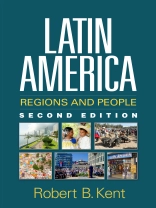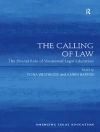Popular among students for its engaging, accessible style, this text provides an authoritative overview of Latin America’s human geography as well as its regional complexity. Extensively revised to reflect the region’s ongoing evolution in the first decades of the 21st century, the second edition’s alternating thematic and regional chapters trace Latin America’s historical development while revealing the diversity of its people and places. Coverage encompasses cultural history, environment and physical geography, urban development, agriculture and land use, social and economic processes, and the contemporary patterns of the Latin American diaspora. Pedagogical features include vivid topical vignettes, end-of-chapter recommended readings and other resources, and 217 photographs, maps, and figures. New to This Edition *Discussions of climate change and its impacts, the demise of the Monroe doctrine, neoliberal agriculture, the growing influence of Chinese investment, and other new topics. *13 new vignettes highlighting current issues such as the thaw in United States-Cuba relations, drug violence in Mexico, aerial gondolas in the Andes, and the first Latin pope. *Annotated website and film recommendations for most chapters. *The latest development trends, population and economic data, and current events of local and global significance. *26 new photographs, maps, and figures.
Содержание
1. Introduction 2. Latin America as a Culture Region 3. The Environment 4. The Hispanic Caribbean 5. Peopling Latin America to 1820 6. The Mesa Central of Mexico 7. Early Cities and Urban Development 8. The Andes 9. Migration, Population Change, and Race 10. The Central Valley of Chile 11. The Central American Highlands 12. Land and People since the Conquest 13. Brazil’s Atlantic Coastal Plain 14. Contemporary Cities and Urban Patterns 15. The Southern Brazilian Highlands 16. Latin American Development in Perspective 17. The Pampa 18. Latin America in the World Economy 19. The Amazon Basin 20. The Latin American Diaspora 21. Conclusion Chapter References
Об авторе
Robert B. Kent, Ph D, is Department Chair and the James H. Ring Professor of Urban Studies and Planning at the California State University, Northridge, and Professor Emeritus of Geography and Planning at the University of Akron. Much of his research and publications have focused on the human geography of Latin America, especially the Andes and Central America, and on the evolving geography of Latin Americans in the United States. His areas of expertise include urban planning, regional development, cultural geography, and cartography. Dr. Kent has traveled, lived, and worked throughout Latin America, including nearly 3 years spent as an urban and regional planner in Peru for the United States Agency for International Development (USAID). He served as a consultant for USAID in Bolivia on numerous occasions. He was a Fulbright Scholar at the Universidad Nacional de San Juan in San Juan, Argentina, and at the Universidad Pedagógica Nacional in Tegucigalpa, Honduras, and also spent a year as a visiting scholar at the Universitat Jaume I in Castellón de la Plana, Spain. Dr. Kent is a recipient of the Eminent Latin Americanist Career Award from the Conference of Latin American Geographers (CLAG). He is a past chair of CLAG and is currently its treasurer and a member of its board of directors. He also has been a councilor and treasurer of the Association of American Geographers.












